第一章 介绍
1.1 How to use this manual
第二章 开始使用Geant4—从运行简单例子开始
2.1 如何定义main程序
2.1.1 一个简单的main程序
2.1.2 G4RunManager
2.1.3 User Initialization and Action Classes【用户初始化和操作类】
2.1.4 G4UImanager and UI CommandSubmission命令提交
2.1.5 G4cout and G4cerr
2.2 How to Define a Detector Geometry【如何定义探测器几何】
2.2.1 Basic Concepts【基本概念】
2.2.2 Create a Simple Volume【创建一个简单的Volume】
2.2.3 Choose a Solid【选择一个实体】
2.2.4 Create a Logical Volume【创建一个逻辑Volume】
2.2.5 Place a Volume【放置一个volume】
2.2.6 Create a Physical Volume【创建一个物理volume】
2.2.7 Coordinate Systems and Rotations【坐标系和旋转】
2.3 How to Specify Materials in the Detector【如何在检测器中指定材料】
2.3.1 General Considerations【一般注意事项】
2.3.2 Define a Simple Material【定义一个简单的材料】
2.3.3 Define a Molecule【定义一个分子】
2.3.4 Define a Mixture by Fractional Mass【根据质量分数定义混合物】
2.3.5 Define a Material from the GEANT4 Material Database【从G4材料库中定义材料】
2.3.6 Define a Material from the Base Material【从基材定义材料】
2.3.7 Print Material Information【打印材料信息】
2.3.8 Access to GEANT4 material database【访问GEANT4材料数据库】
2.4 How to Specify Particles【如何指定粒子】
2.4.1 Particle Definition【粒子定义】
2.4.2 Range Cuts范围削减
2.5 How to Specify Physics Processes【如何指定物理过程】
2.5.1 Physics Processes【物理过程】
2.5.2 Managing Processes【管理进程】
2.5.3 Specifying Physics Processes【指定物理过程】
2.6 How to Generate a Primary Event【如何生成主事件】
2.6.1 Generating Primary Events【生成主要事件】
2.6.2 G4VPrimaryGenerator【G4主发生器】
2.7 GEANT4 General Particle Source【GEANT4通用粒子源】
2.7.1 Introduction【介绍】
2.7.2 Configuration【配置】
2.7.3 Macro Commands【宏命令】
2.7.4 Example Macro File【示例宏文件】
2.8 How to Make an Executable Program【如何制作可执行程序 .exe】
2.8.1 Using CMake to Build Applications[使用CMake构建应用程序]
2.8.2 Using Geant4Make to build Applications【使用Geant4Make构建应用程序】
2.9 How to Set Up an Interactive Session【如何设置交互式会话】
2.9.1 Introduction【简介】
2.9.2 A Short Description of Available Interfaces【可用接口的简短说明】
2.9.3 How to Select Interface in Your Applications【如何在您的应用程序中选择界面】
2.10 How to Execute a Program【如何执行程序】
2.10.1 Introduction【简介】
2.10.2 ‘Hard-coded’ Batch Mode【硬编码'批量模式】
2.10.3 Batch Mode with Macro File【批处理模式与宏文件】
2.10.4 Interactive Mode Driven by Command Lines【命令行驱动的交互模式】
2.10.5 General Case【一般情况】
2.11 How to Visualize the Detector and Events【如何可视化探测器和事件】
2.11.1 Introduction【简介】
2.11.2 Visualization Drivers【可视化驱动程序】
2.11.3 How to Incorporate Visualization Drivers into an Executable【如何将可视化驱动程序合并到可执行文件中】
2.11.4 Writing the main() Method to Include Visualization【编写包含可视化的main】
2.11.5 Sample Visualization Sessions【示例可视化会话】
2.11.6 For More Information on GEANT4 Visualization【有关GEANT4可视化的更多信息】
第三章 工具包的基础概念
3.1 Class Categories and Domains【类的功能】
3.1.1 What is a class category?【什么是功能模块?】
3.1.2 Class categories in GEANT4【在 Genat4 中的功能模块】
3.2 Global Usage Classes【全局类】
3.2.1 Signature of GEANT4 classes【Geant4 类的命名】
3.2.2 The HEPRandom module in CLHEP【CLHEP 中的 HEPRandom 模块】
3.2.3 The HEPNumerics module【HEPNumerics 模块】
3.2.4 General management classes【通用管理类】
3.3 System of units【单位系统】
3.3.1 Basic units【基本单位】
3.3.2 Input your data【输入数据】
3.3.3 Output your data【输出数据】
3.3.4 Introduce new units【引入新的单位】
3.3.5 Print the list of units【输出单位列表】
3.4 Run
3.4.1 Basic concept of Run【Run 的基本概念】
3.4.2 GEANT4 as a state machine【Geant4 状态机】
3.4.3 User's hook for state change【用于状态改变时的用户 hook】
3.4.4 Customizing the Run Manager【定制 run Manager】
3.4.5 Managing worker thread【管理工作线程】
3.5 Event【事件】
3.5.1 Representation of an event
3.5.2 Structure of an event【事件的结构】
3.5.3 Mandates of G4EventManager【G4EventManager 的要求】
3.5.4 Stacking mechanism【栈机制】
3.6 Event Generator Interface【事件发生器接口】
3.6.1 Structure of a primary event【初级事件结构】
3.6.2 Interface to a primary generator【初级事件发生器接口】
3.6.3 Event overlap using multiple generators【使用多个事件发生器的事件复合】
3.7 Event Biasing Techniques【事件偏倚技巧】
3.7.1 Scoring, Geometrical Importance Sampling and Weight Roulette【Scoring,几何重要性采样和权重轮盘赌】
3.7.2 Physics Based Biasing【基于物理学的偏置】
3.7.3 3.7.3 Adjoint/Reverse Monte Carlo【伴随/逆向蒙特卡罗】
3.7.4 Generic Biasing【通用偏置】
第四章 探测器定义和响应
第五章 径迹示踪和物理过程
5.1 径迹示踪
5.1.1 基础概念
5.1.2 获取径迹与单步信息
5.1.3 次级粒子的控制
5.1.4 用户行为
5.1.5 冗余信息输出
5.1.6 轨迹与轨迹点
5.2 物理过程
5.2.1 概述
5.2.2 电磁反应
5.2.3 强子互相作用
5.2.4 粒子衰变物理过程
第六章 USER ACTIONS用户操作行为
6.1 User Actions(用户操作)
6.2 Mandatory User Actions and Initializations(强制用户操作和初始化)
6.2.1 G4VUserDetectorConstruction
6.2.2 Physics Lists(物理列表)
6.2.3 User Action Initialization(用户操作初始化)
6.3 Optional User Actions(可选的用户操作)
6.3.1 Usage of User Actions
6.3.2 Killing Tracks in User Actions and Energy Conservation(在用户操作和能量转换中杀死tracks)
6.4 User Information Classes(用户信息类)
6.4.1 G4VUserEventInformation
6.4.2 G4VUserTrackInformation
6.4.3 G4VUserPrimaryVertexInformation and G4VUserPrimaryTrackInformation
6.4.4 G4VUserRegionInformation
6.5 Multiple User Actions(多个用户操作类)
6.5.1 Exceptions(例外情况)
第七章 控制【CONTROL】
7.1 内置命令【Built-in Commands】
7.2 用户接口-定义新命令【User Interface - Defining New Commands】
7.2.1 G4UImessenger
7.2.2 G4UIcommand和它的派生类【G4UIcommand and its derived classes】
7.2.3 一个messenger的例子【An example messenger】
7.2.4 如何控制G4cout/G4cerr的输出【How to control the output of G4cout/G4cerr】
第八章 可视化
第九章 ANALYSIS【分析】
9.1 9.1 Introduction【简介】
9.2 9.2 Analysis Manager Classes分析管理器类
9.2.1 9.2.1 Analysis Manager分析管理器
9.2.2 9.2.2 Files handling文件处理
9.2.3 9.2.3 Histograms
9.2.4 9.2.4 Profiles
9.2.5 9.2.5 Plotting【画图】
9.2.6 9.2.6 Ntuples
9.2.7 9.2.7 Parallel Processing
9.2.8 9.2.8 Coexistence of Several Managers
9.2.9 9.2.9 Supported Features and Limitations
9.3 9.3 Analysis Reader Classes
9.3.1 9.3.1 Analysis Reader
9.3.2 9.3.2 File handling
9.3.3 9.3.3 Histograms and Profiles
9.3.4 9.3.4 Ntuples
9.4 9.4 Accumulables
9.4.1 9.4.1 G4Accumulable
9.4.2 9.4.2 User defined accumulables
9.5 9.5 g4tools
9.5.1 9.5.2 User API
第十章 EXAMPLES【例子】
10.1 Introduction【简介】
10.2 Basic Examples【基本示例】
10.2.1 BasEc ixalpmes Summary【基本示例摘要】
10.2.2 Basic Examples Macros【基本示例宏】
10.2.3 Multi-threading【多线程】
10.2.4 Example B1
10.2.5 Example B2
10.2.6 Example B3
10.2.7 Example B4
10.2.8 Example B5
10.3 Extended Examples【扩展示例】
10.3.1 Extended Example Summary
10.4 Advanced Examples【高级示例】
10.5 Novice Examples【新手示例】
第十一章 附录
第十二章 STATUS OF THIS DOCUMENT【本文件的状态】
参考文献
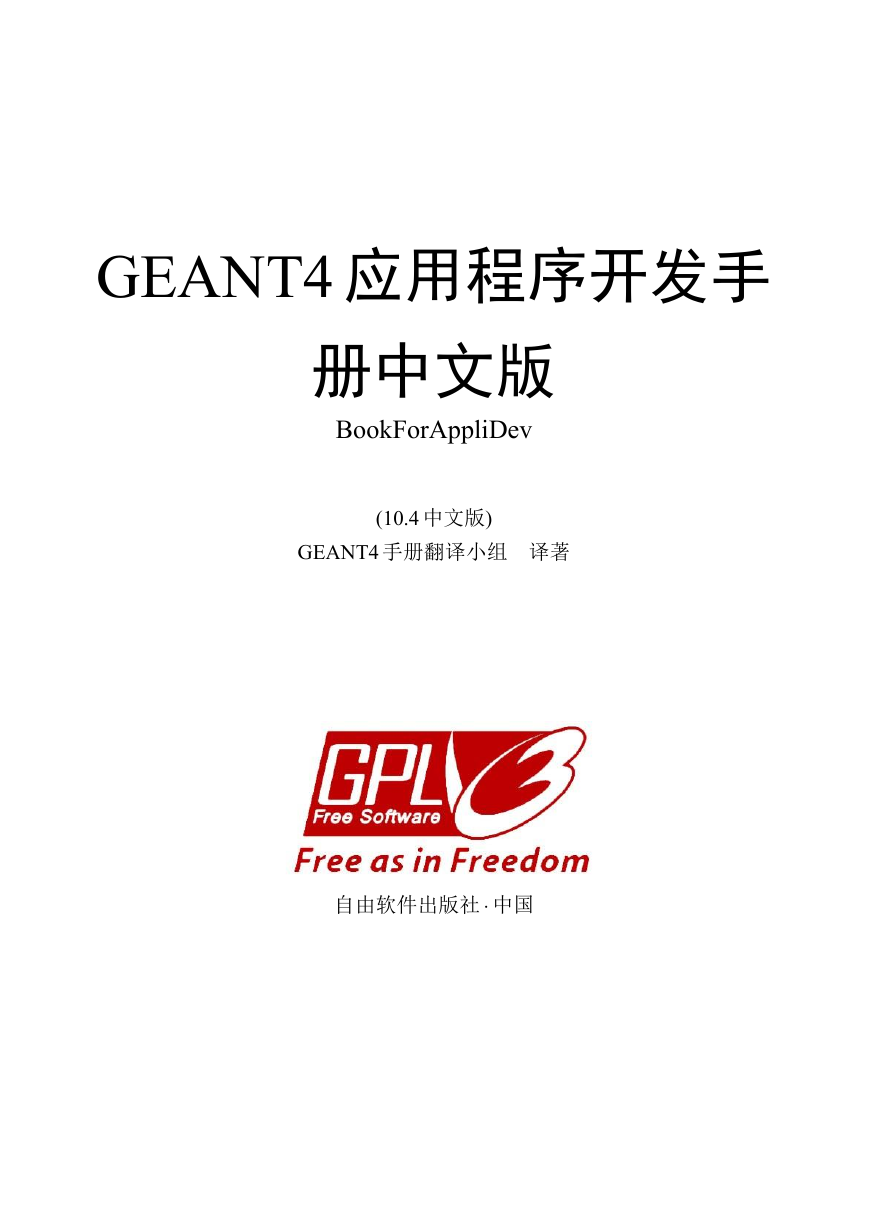
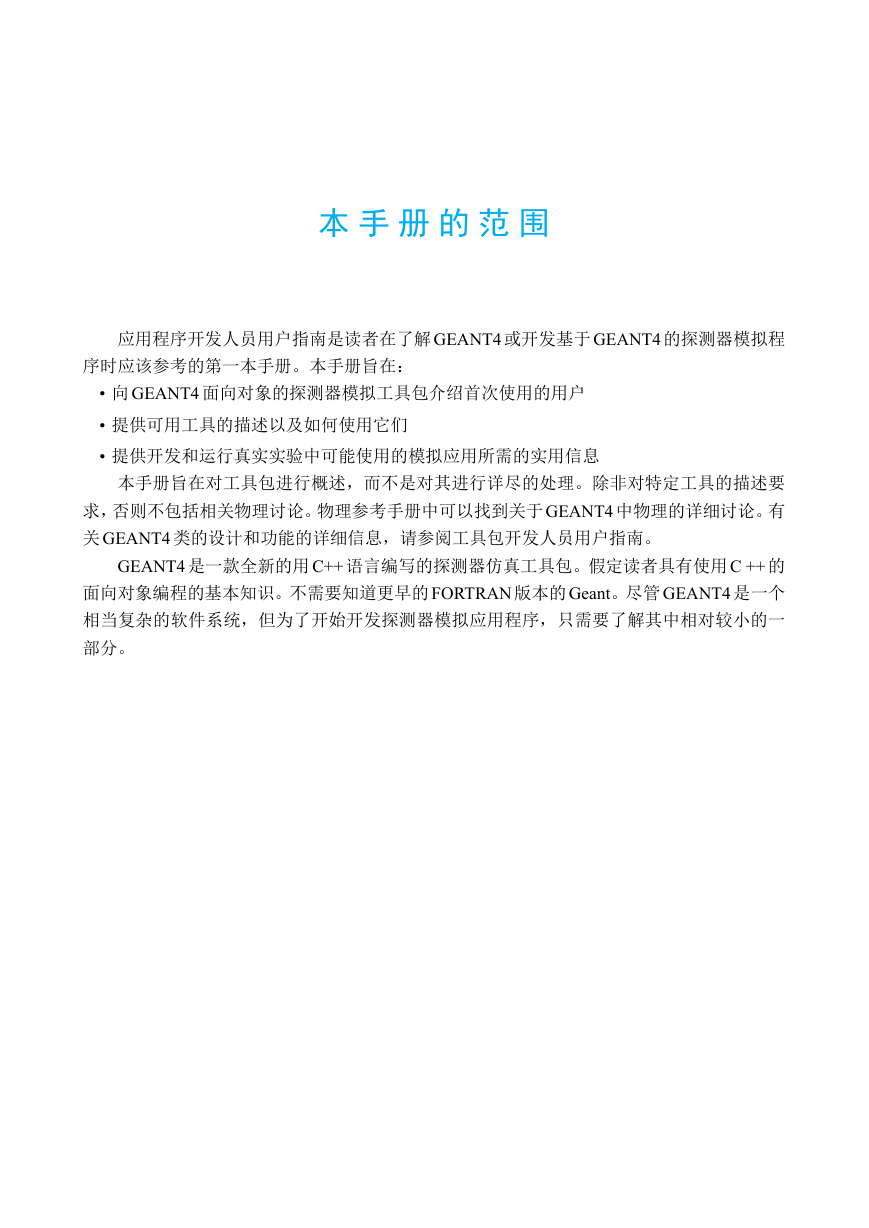
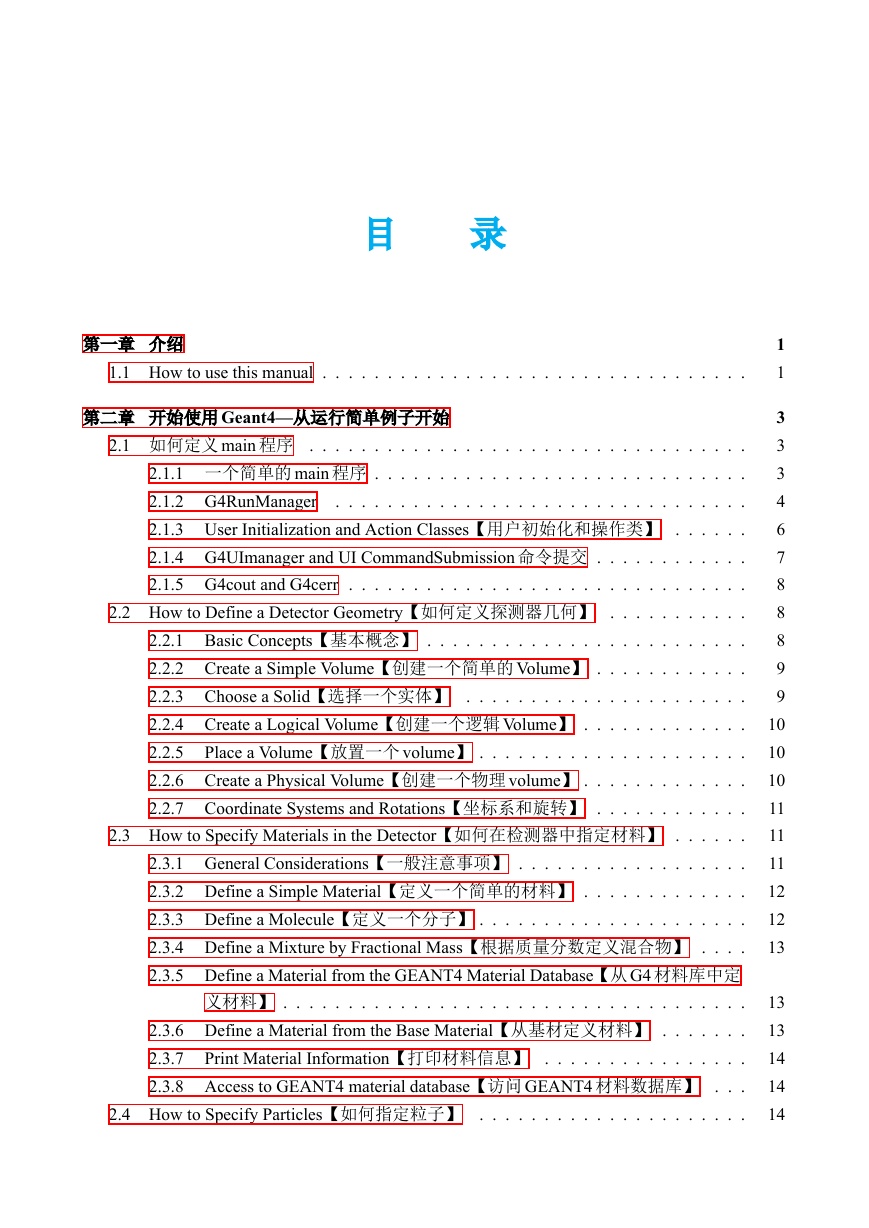
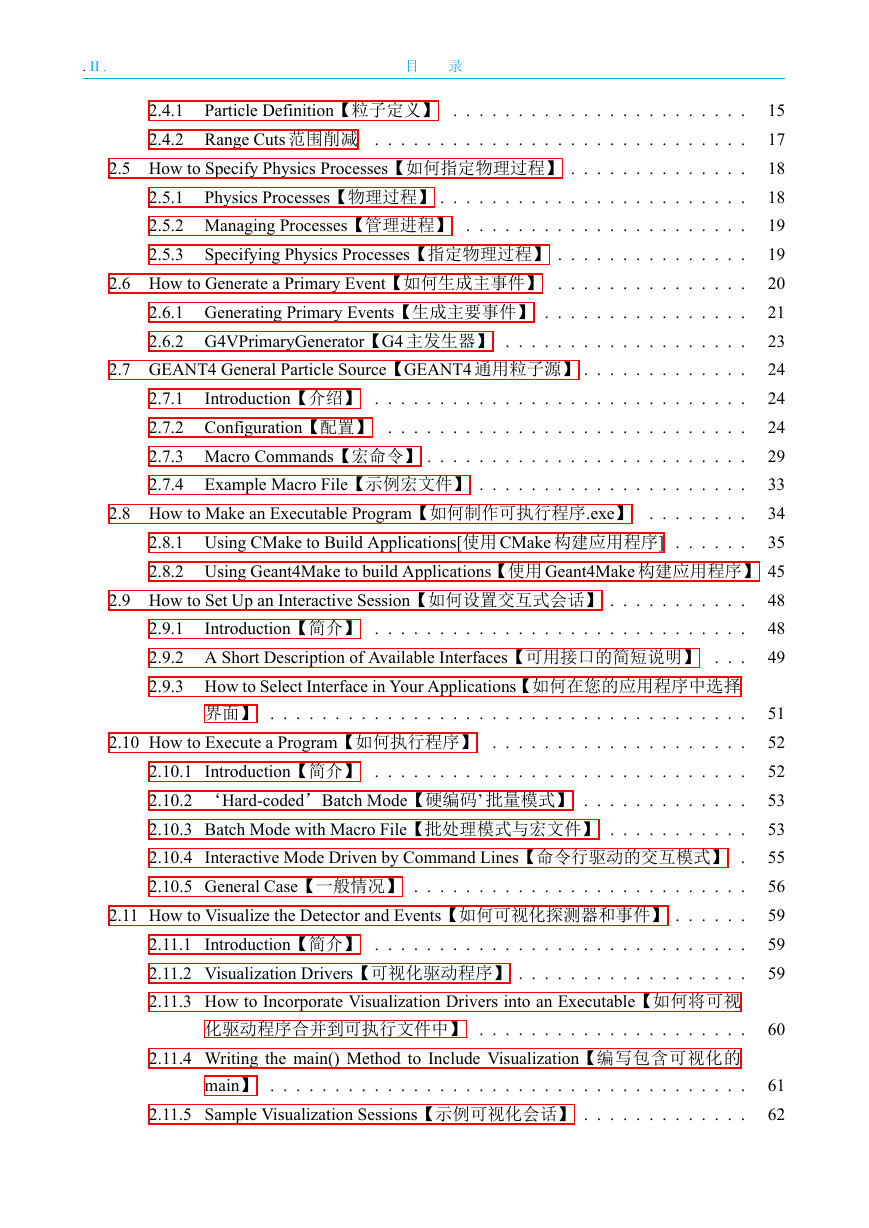
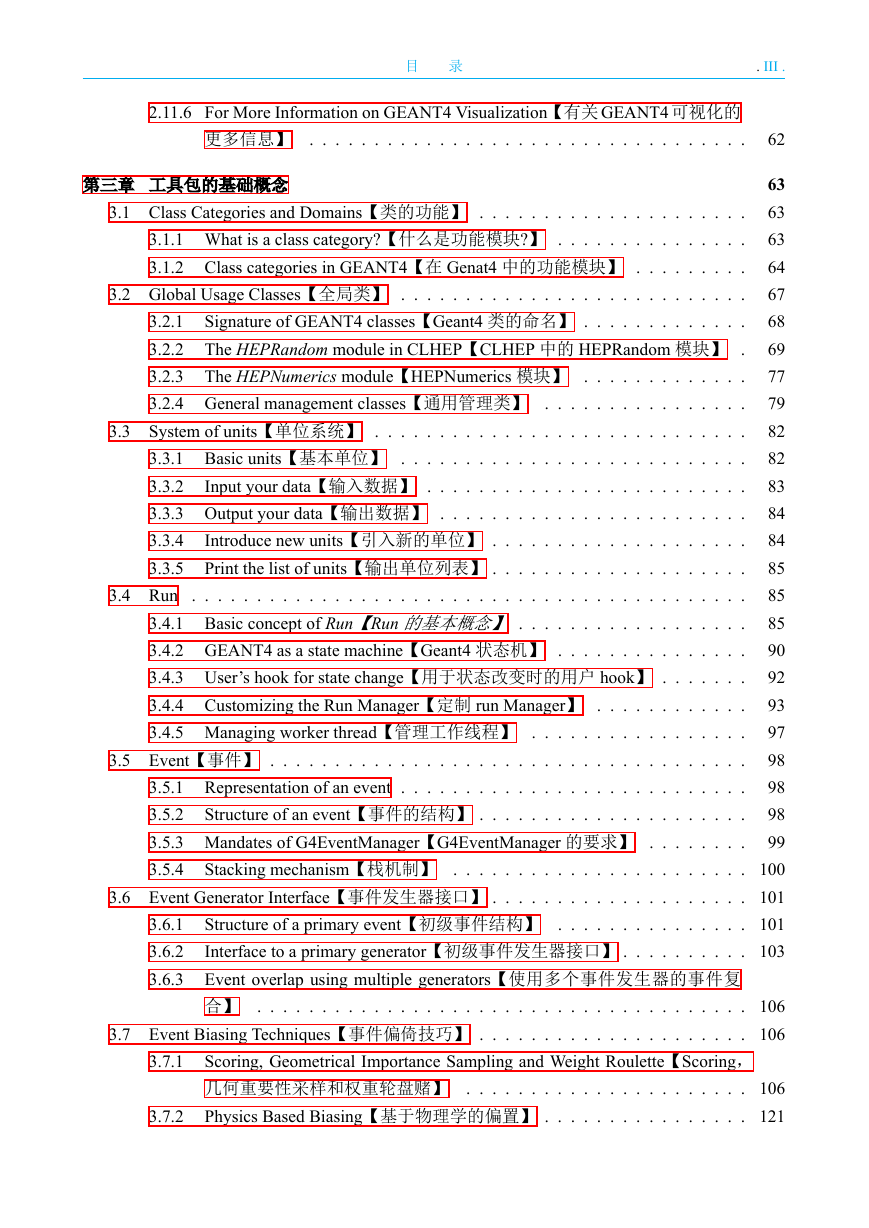
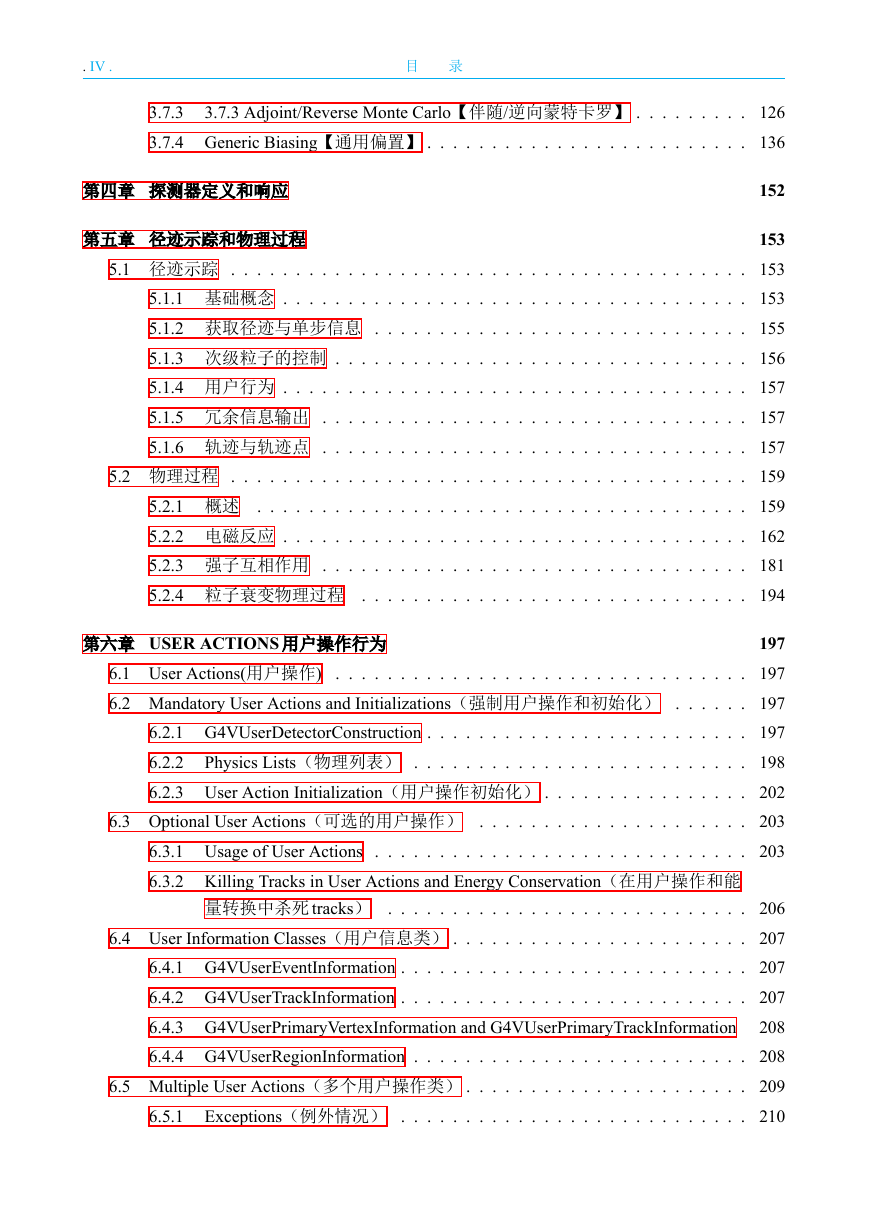










 2023年江西萍乡中考道德与法治真题及答案.doc
2023年江西萍乡中考道德与法治真题及答案.doc 2012年重庆南川中考生物真题及答案.doc
2012年重庆南川中考生物真题及答案.doc 2013年江西师范大学地理学综合及文艺理论基础考研真题.doc
2013年江西师范大学地理学综合及文艺理论基础考研真题.doc 2020年四川甘孜小升初语文真题及答案I卷.doc
2020年四川甘孜小升初语文真题及答案I卷.doc 2020年注册岩土工程师专业基础考试真题及答案.doc
2020年注册岩土工程师专业基础考试真题及答案.doc 2023-2024学年福建省厦门市九年级上学期数学月考试题及答案.doc
2023-2024学年福建省厦门市九年级上学期数学月考试题及答案.doc 2021-2022学年辽宁省沈阳市大东区九年级上学期语文期末试题及答案.doc
2021-2022学年辽宁省沈阳市大东区九年级上学期语文期末试题及答案.doc 2022-2023学年北京东城区初三第一学期物理期末试卷及答案.doc
2022-2023学年北京东城区初三第一学期物理期末试卷及答案.doc 2018上半年江西教师资格初中地理学科知识与教学能力真题及答案.doc
2018上半年江西教师资格初中地理学科知识与教学能力真题及答案.doc 2012年河北国家公务员申论考试真题及答案-省级.doc
2012年河北国家公务员申论考试真题及答案-省级.doc 2020-2021学年江苏省扬州市江都区邵樊片九年级上学期数学第一次质量检测试题及答案.doc
2020-2021学年江苏省扬州市江都区邵樊片九年级上学期数学第一次质量检测试题及答案.doc 2022下半年黑龙江教师资格证中学综合素质真题及答案.doc
2022下半年黑龙江教师资格证中学综合素质真题及答案.doc